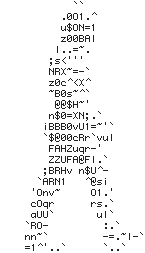THE FIRST CALENDAR
Future historians will be in a unique position when they come
to record the history of our own times. They will hardlyknow which
facts to select from the great mass of evidencethat steadily accumulates.
What is more, they will not have to rely solely on the written word.
Films, gramophone records, and magnetic tapes will provide them
with a bewildering amount of information. They will be able, as it were,
to see and hear us in action. But the historian attempting to reconstruct
the diztant past is always faced with a difficult task. He has to deduce
what he can from the few scanty clues available. Even seemingly
insignificant remains, can shed interesting light on the history of early man.
Up to now, historians have assumed that calendars came into being
with the advent of agriculture, for then man was faced with a real need to
understand something about the seasons. Recent scientific evidence seems
to indicate that this assumption is incorrect.
Historians have long been puzzled by dots, lines and symbols which
have been engraved on walls, bones and the ivory tusks of mammoths.
The nomads who made these markings lived by hunting and fishing during
the last Ice Age which began about 35.000 B.C.and ended about 10.000 B.C.
By correlating markings made in various parts of the world, historians have
been able to read this difficult code. They have found that it is connected with
the passage of days and the phases of the moon.
It is, in fact, a primitive type of calendar. It has long been known that the hunting scenes depicted on walls, were not simply a form of artistic expression.
They had a definite meaning, for they were as near as early man could get to
writing. It is possible that there is a definite relation between these paintings and the markings that sometimes accompany them. It seems that man was making a real
effort to understand the seasons 20.000 years earlier than has been supposed.


















































































No comments:
Post a Comment